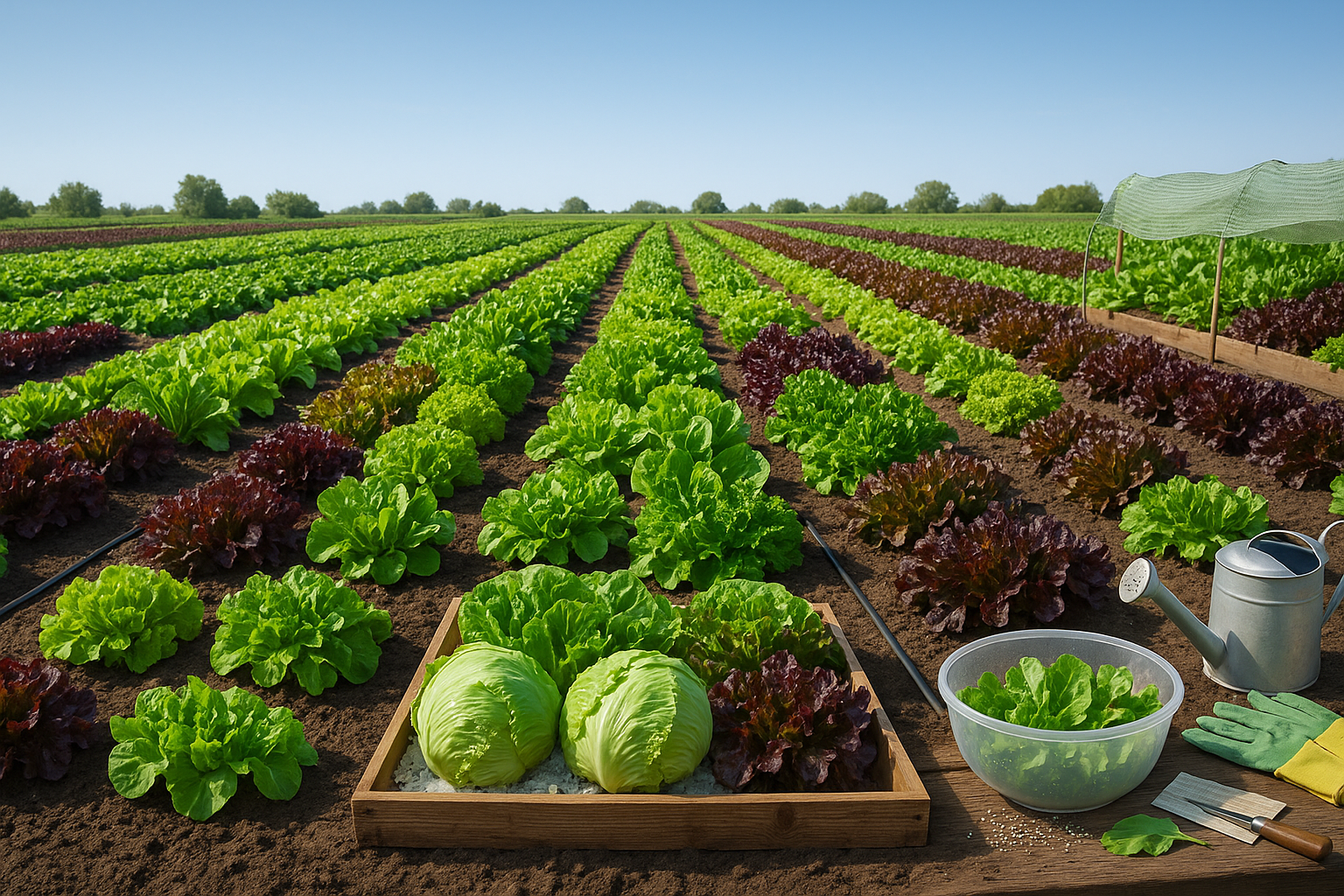Introduction
Commercial lettuce farming is quickly becoming one of the most popular and profitable ventures for small farmers, and it’s easy to see why. Lettuce is in constant demand by restaurants, supermarkets, and health-conscious consumers who crave fresh, locally grown greens year-round. Its fast growth cycle, relatively low input costs, and the ability to harvest multiple times a season make lettuce especially appealing for those seeking reliable, repeat income streams.
As more people embrace plant-based diets and prioritize food origins, the demand for fresh, high-quality lettuce grown close to home continues to climb. If you’re considering how to grow lettuce commercially on a small farm, you’re tapping into a thriving market that rewards both quality and innovation.
In this blog post, you’ll learn everything you need to get started: choosing the right lettuce varieties, optimizing planting schedules for continuous harvests, efficient irrigation methods, pest and disease management, marketing strategies, and even tips for scaling up as your business grows. Whether you’re a new grower or looking to fine-tune your process, these insights will help set you up for success in commercial lettuce farming, turning your small plot into a productive and profitable enterprise.
Choosing the Right Lettuce Varieties for Your Farm
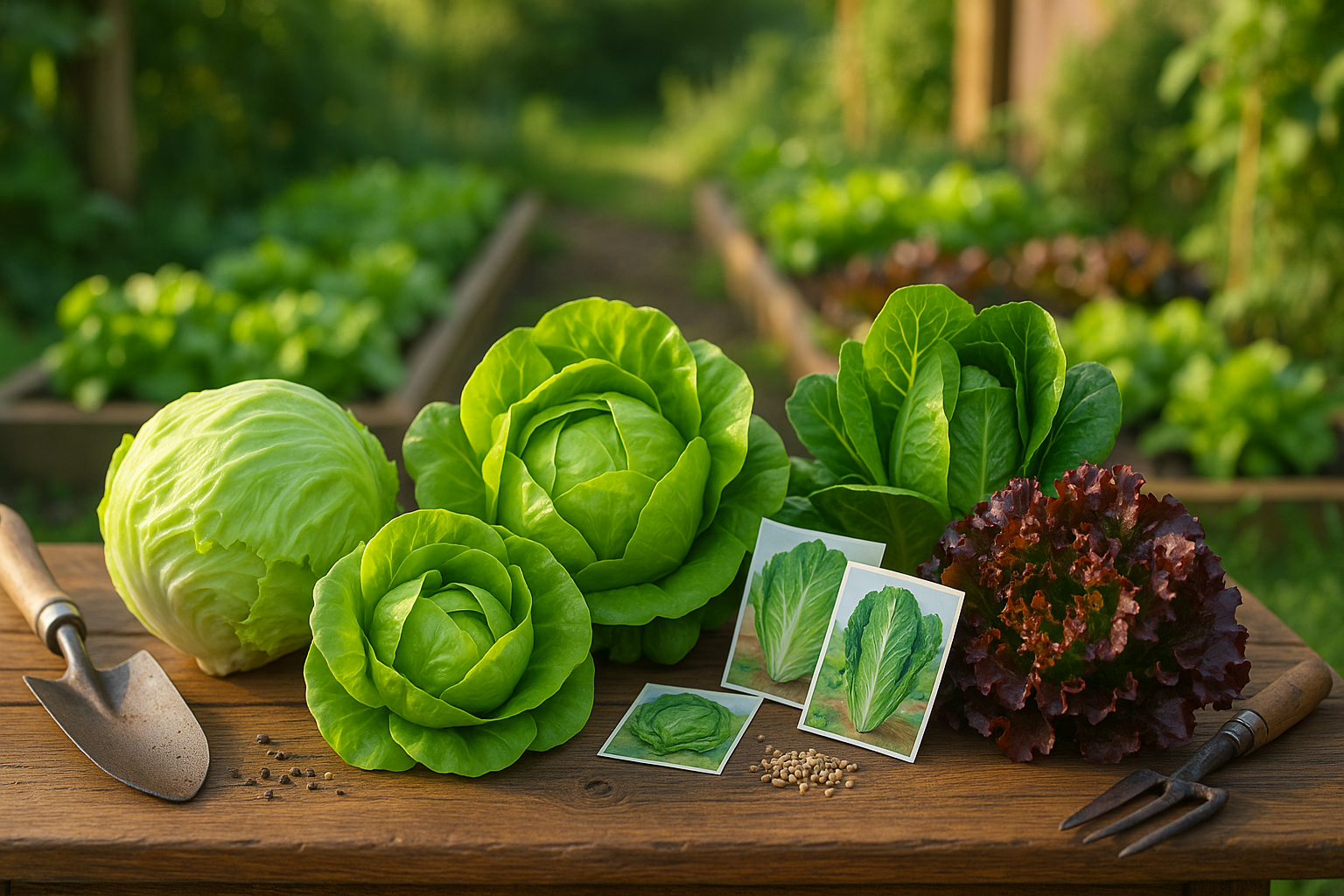
Selecting the right lettuce varieties can significantly impact your farm’s productivity and profitability. Crisphead lettuces, like iceberg, are popular for their firm heads and long shelf life, making them a favorite with grocery stores. However, they require cool conditions and a longer growing season and are more prone to tip burn in warmer climates—so they may not be the best choice if you have hot summers or limited cool-season growing windows.
Butterhead varieties, such as Boston and Bibb, are cherished by chefs for their tender leaves and mild flavor and often fetch higher prices at farmers’ markets. These types tolerate a bit more heat than crisphead lettuces, but their delicate heads bruise easily, which can be a challenge during harvesting and transport.
Romaine (cos) lettuces stand out for their crunchy texture and nutritional value. Their upright habit makes them well-suited for higher-density planting; they can also handle a wider range of temperatures and are increasingly popular thanks to Caesar salads.
Loose-leaf lettuces, such as oakleaf and red leaf, have the fastest days-to-harvest and allow for “cut-and-come-again” picking, which is perfect for staggered market sales but means a shorter shelf life and less visual uniformity.
Tips for Choosing the Best Lettuce Varieties
- Match varieties to your climate—select heat-tolerant cultivars for warm regions and bolt-resistant types for late spring or early summer sowings.
- Check with local extension services or seed catalogs for disease-resistant strains, focusing on issues like downy mildew or lettuce mosaic virus.
- Prioritize cultivars with proven high yields in small-scale test plots or peer-reviewed variety trials.
- Talk to local buyers or chefs to understand which textures and colors are in demand; small farms thrive by offering specialty or heirloom varieties that bigger growers can’t match.
Ideal Growing Conditions and Soil Preparation
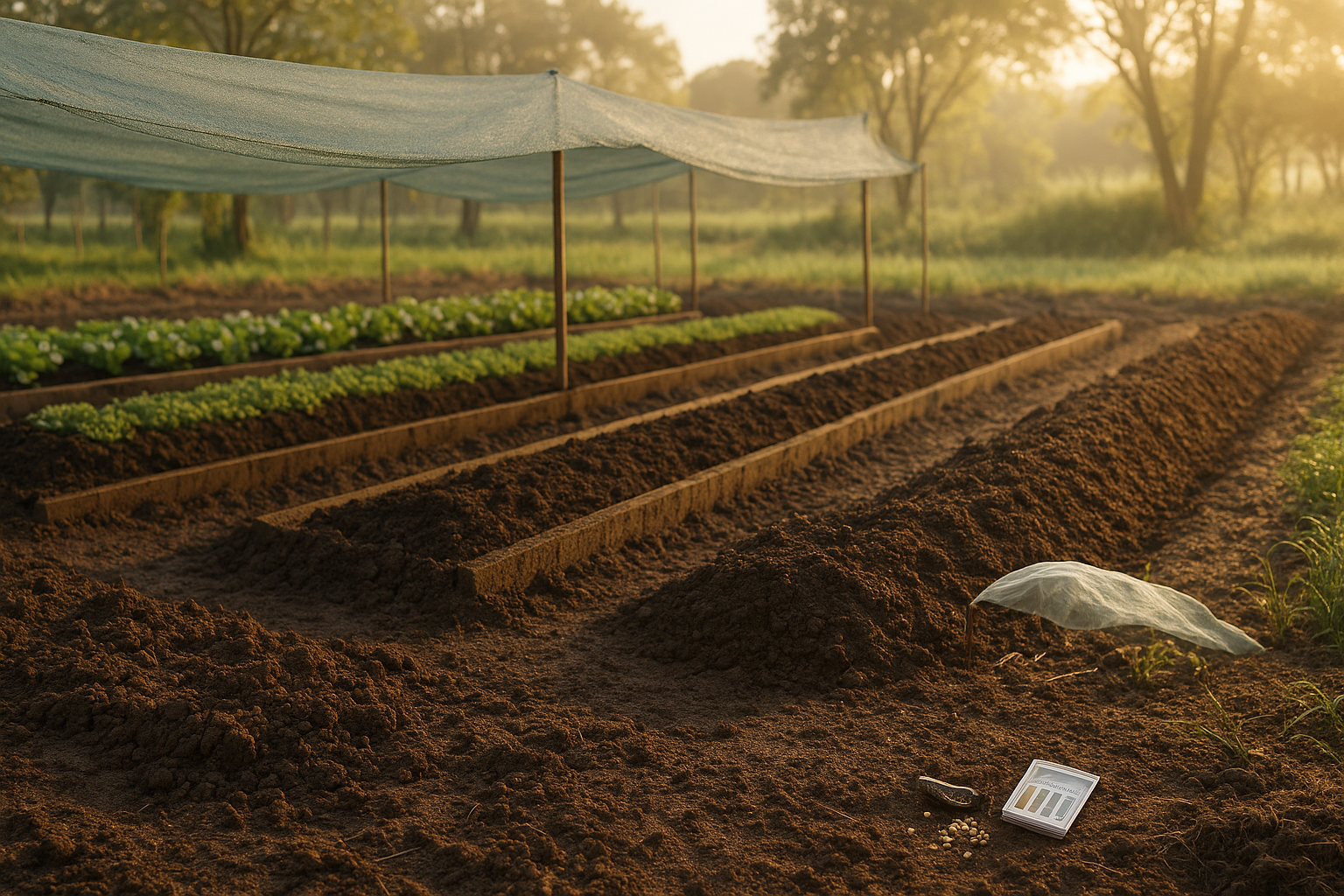
Lettuce thrives best in cool, mild climates, making it perfect for spring and fall planting when temperatures range between 55°F and 70°F (13°C–21°C). To avoid bolting and bitter leaves, provide partial shade in areas with hotter summers or plant early in the season. Lettuce requires a minimum of six hours of sunlight daily, but in hotter climates, some afternoon shade can protect the plants.
For soil, choose a loose, well-draining texture—loam or sandy loam is ideal, as heavy clay can cause root rot. Aim for a soil pH between 6.0 and 6.8 for optimal nutrient uptake; you can easily test this with an inexpensive home test kit. High soil fertility yields the healthiest lettuce, so amend the site in advance by mixing in plenty of well-rotted compost or aged manure a few weeks before planting.
Good drainage is crucial—raised beds or gently mounded rows work well in wetter zones. For field preparation, clear away all previous crop debris to reduce disease risk, break up compacted soil, and rake the surface smooth.
Lettuce is prone to pest and disease buildup, so practice crop rotation by not replanting lettuce or other leafy greens in the same spot more than once every three years.
Before sowing, work in a balanced fertilizer or slow-release organic amendment according to your soil test results to ensure nutrients like nitrogen, phosphorus, and potassium are available for robust growth. If your soil is heavy or tends to stay wet, incorporate coarse sand or organic matter to improve drainage.
Taking these extra steps before planting boosts your lettuce’s resilience, giving you strong, fast-growing heads and leaves that are crisp, sweet, and vibrant.
Planting Practices and Crop Management
Small farms often weigh the choice between direct seeding and transplanting, each method offering its own benefits and drawbacks. Direct seeding—where seeds are sown straight into prepared soil—is simpler and less labor-intensive, making it ideal for quick crops like carrots, beans, and radishes. This approach is also cost-effective but can result in uneven plant stands if soil conditions or weather aren’t optimal, and it typically requires more intensive early weed control.
Transplanting, on the other hand, involves starting seeds indoors or in a protected area and moving young plants into the field later. This method gives plants a head start, reduces early competition from weeds, and is especially valuable for crops like tomatoes, peppers, and brassicas. However, the extra effort and resources required for starting and moving seedlings add labor and cost, which can be a challenge on a small budget.
Regardless of the method, optimal plant spacing is crucial; leafy greens often do well at 6–9 inches apart, while larger crops like tomatoes and peppers need 18–24 inches. For a steady harvest, consider succession planting—sowing or transplanting new batches every 2–3 weeks—which helps avoid feast-or-famine cycles and keeps markets or kitchen tables consistently supplied.
Irrigation needs depend on the crop and climate, but most vegetables thrive with about 1–1.5 inches of water per week, preferably provided by drip irrigation or soaker hoses to minimize disease risks.
Weed and pest control are most effective when integrated—using multiple approaches for a healthier ecosystem. Mulching with straw or organic matter suppresses weeds and conserves moisture, while regular walk-throughs to hand-pull weeds or scout for pests keep small problems from becoming big ones.
Embracing integrated pest management (IPM) means starting with prevention—crop rotation, healthy soil, and resistant varieties—then using mechanical controls like row covers and, only as a last resort, targeted organic-approved sprays. This holistic strategy not only helps safeguard crops but also supports long-term soil and environmental health, which is crucial for the sustainability of small farms.
Harvesting and Post-Harvest Handling
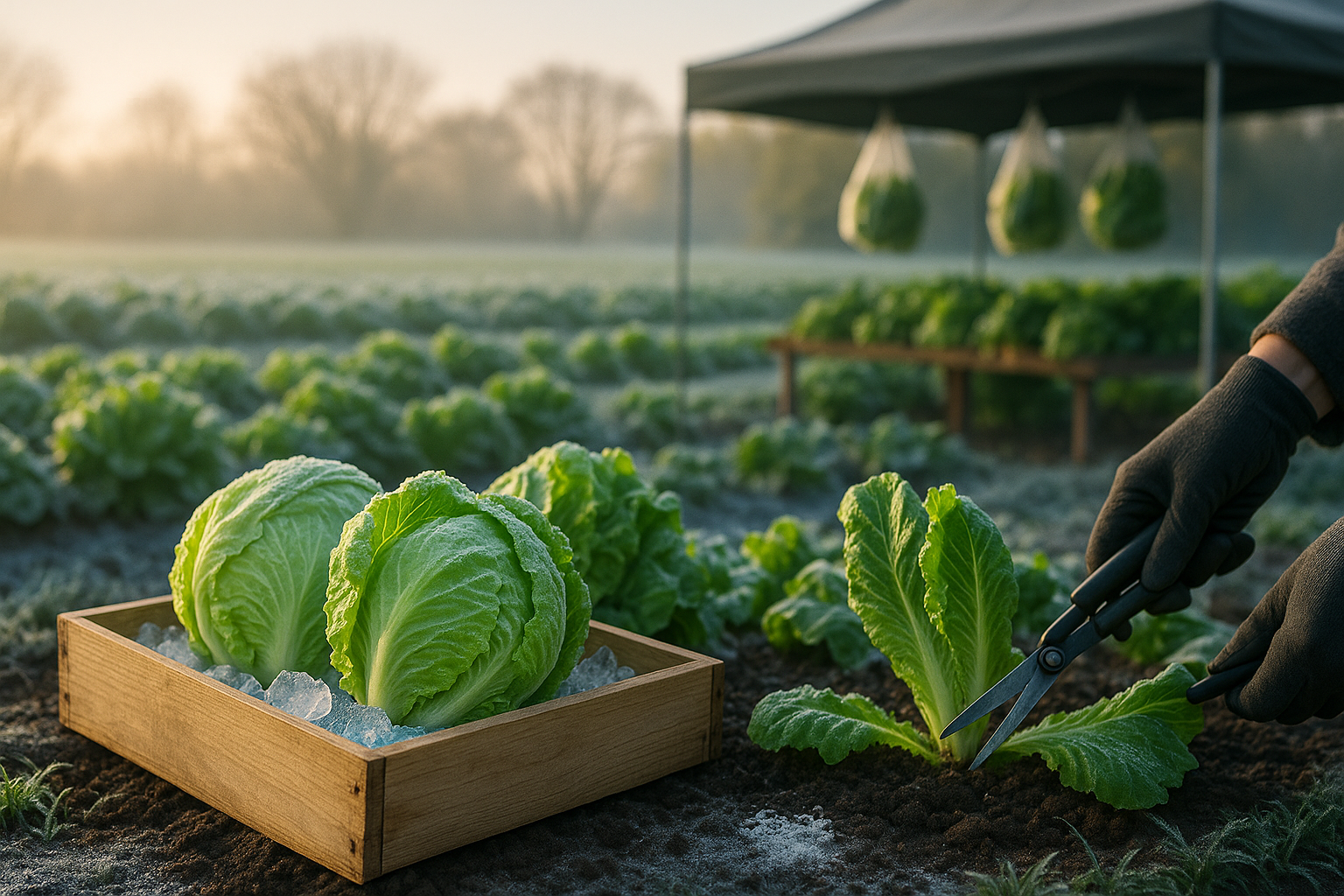
Harvesting lettuce at the right time is crucial for both quality and yield. Different varieties have unique cues: loose-leaf lettuce should be picked when the leaves are large enough to eat but before they get tough, usually around 30–45 days after sowing. Crisphead types like iceberg need more time, typically 70–85 days, and are ready when the heads feel firm and dense. Romaine is generally harvested when it forms an upright head but before the outer leaves start to yellow.
Morning is the best time to harvest, as lettuce is crisp and full of moisture. Use a clean, sharp knife or garden shears to prevent bruising. Immediately after harvest, lettuce should be cooled rapidly—placing it in cold water or a refrigerator slows deterioration and helps maintain crispness.
Home growers can keep lettuce in the vegetable drawer, ideally at 32°F to 36°F, with high humidity. For larger crops, commercial growers use vacuum cooling or hydrocooling to quickly lower the core temperature.
Common post-harvest issues include wilting and bolting. Wilting often occurs if lettuce is left in the sun too long after picking or stored improperly; this can be prevented by washing and chilling leaves right away and storing them in perforated bags to retain humidity. Bolting—when lettuce prematurely sends up a flower stalk—usually happens in response to high temperatures. Planting tolerant varieties, providing shade during heatwaves, or using successive plantings can help minimize losses.
Consistent attention to timing and careful handling ensures the freshest, most flavorful lettuce possible.
Marketing Your Lettuce Crop
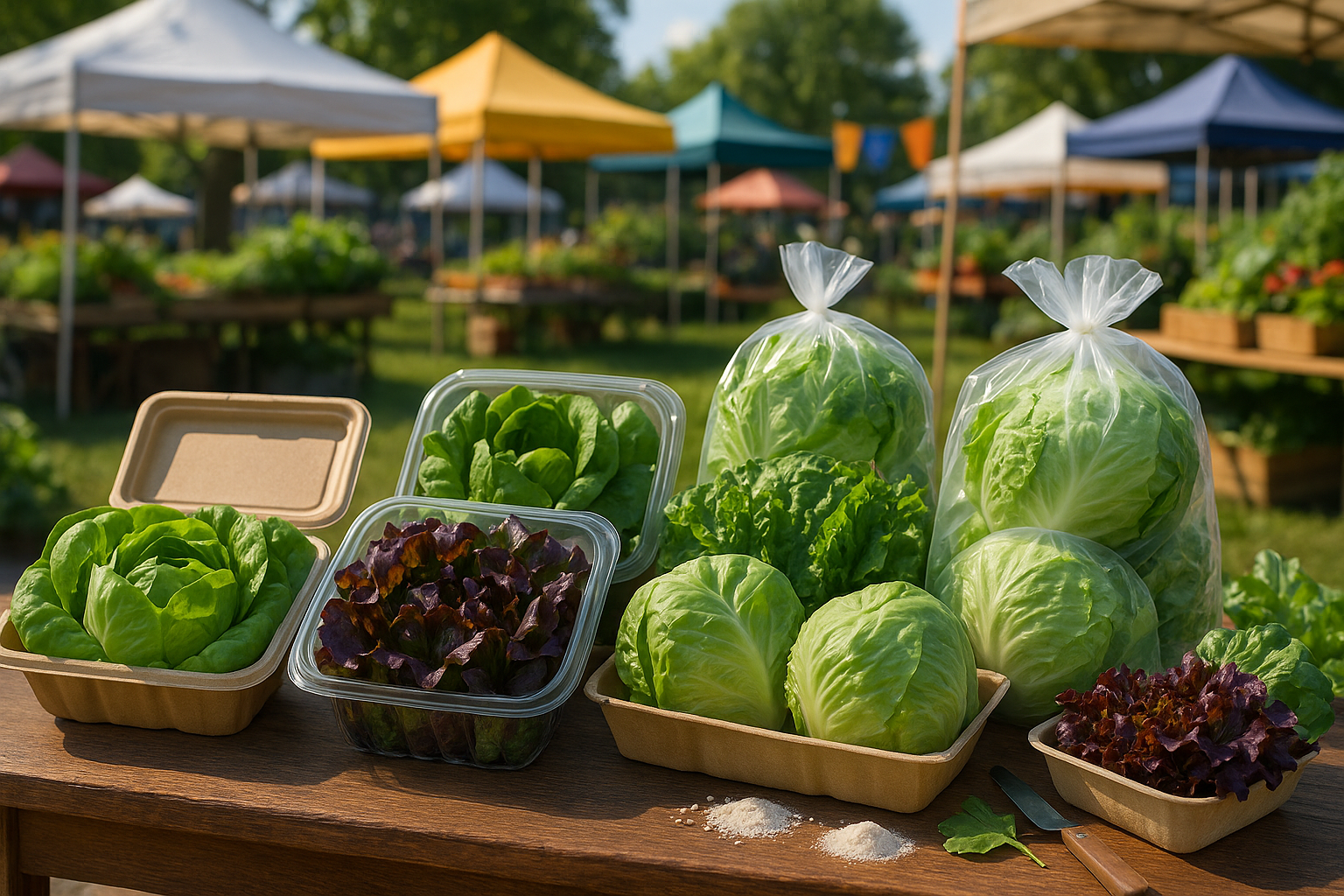
Getting the best return from your lettuce crop starts with choosing the right local market outlets. Farmers’ markets are ideal for direct sales, allowing you to interact with customers and get immediate feedback. Set up an eye-catching display and offer tastes of your freshest leaves.
Community-supported agriculture (CSA) programs are another profitable path; these subscription boxes ensure consistent sales and deepen community ties. Local restaurants and small grocery stores often seek specialty greens and value the freshness and personal touch a local grower brings. Introduce yourself to chefs and store managers, and offer free samples or a trial batch.
How you present your lettuce matters, too. Use clean, attractive packaging like clear recyclable bags or compostable clamshells to show off the leaves and reflect an eco-friendly brand. Craft a memorable label with your farm name, logo, and a brief story—customers love knowing who grew their food.
Keep your product crisp and vibrant by harvesting early, chilling quickly, and delivering promptly, so every head reaches buyers at peak quality. Build relationships by engaging with customers—offer storage and recipe tips at your stall, follow up with restaurants about their needs, and reward loyal CSA members with occasional specialty items.
Small gestures make a difference, like remembering favorite varieties or sharing crop updates on social media. Focus on consistency, transparency, and a friendly attitude, and you’ll not only stand out at market but also encourage repeat sales and positive word-of-mouth for your lettuce business.
Overcoming Common Challenges in Small-Scale Lettuce Production
Small-scale lettuce growers often face rapid temperature changes, persistent pests, and tricky water management—all of which can affect yield and quality. To manage temperature swings, experienced farmers recommend using row covers or shade cloth to protect plants from unexpected frosts or intense midday heat.
Pest and disease outbreaks, such as aphids or downy mildew, are common headaches. Regular scouting helps catch problems early. Many growers swear by introducing beneficial insects like ladybugs or using neem oil for organic pest control, while rotating crops discourages soil-borne diseases.
Water management is equally crucial; inconsistent watering can lead to bitter leaves or root rot. Drip irrigation or soaker hoses deliver steady moisture directly to roots with minimal waste—saving both water and time.
Adaptability is key: tracking the weather, monitoring your lettuce’s growth, and talking to fellow growers (online forums can be goldmines) all help fine-tune your approach as conditions shift. Successful lettuce production isn’t about having all the answers at once—it’s about staying curious, adjusting methods as needed, and learning from every season’s surprises.
Conclusion
Lettuce stands out as a valuable crop for small commercial farms thanks to its quick growth cycle, steady market demand, and adaptability to various climates. Whether you’re just starting out or aiming to improve your lettuce production, consistent planning and small-scale experimentation can help you discover the varieties and growing methods that work best for your farm.
Begin by testing different types of lettuce and noting which ones thrive in your conditions. Consider succession planting to ensure a steady harvest and income.
There are plenty of resources available to support your journey:
- Reach out to your local agricultural extension office
- Join farmer cooperatives
- Explore online forums such as the National Sustainable Agriculture Information Service (ATTRA) and university extension websites
By connecting with other growers and utilizing expert guidance, you can build a successful lettuce operation that meets your customers’ needs and helps grow your business.
